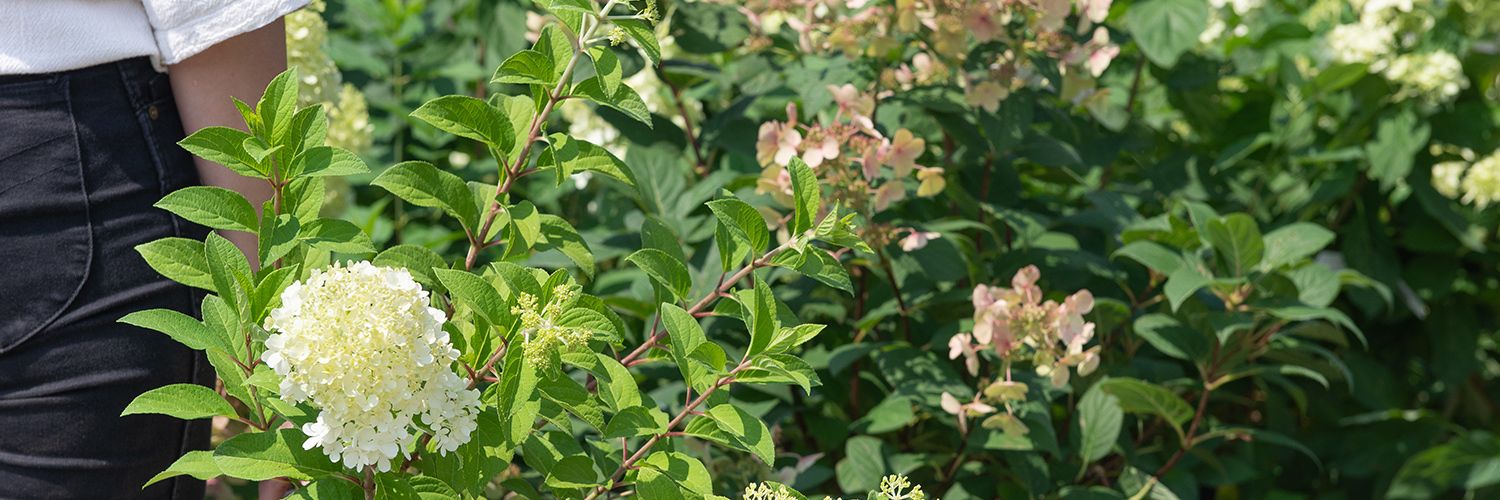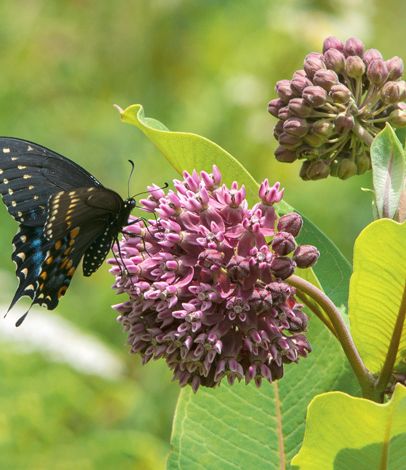
If you’re looking for a beautiful, easy-care shrub with four seasons of interest, meet Hydrangea paniculata, panicle hydrangea, and its many forms. Every sunny landscape needs one of these amazing shrubs – and here we share four reasons why we think you’ll agree.
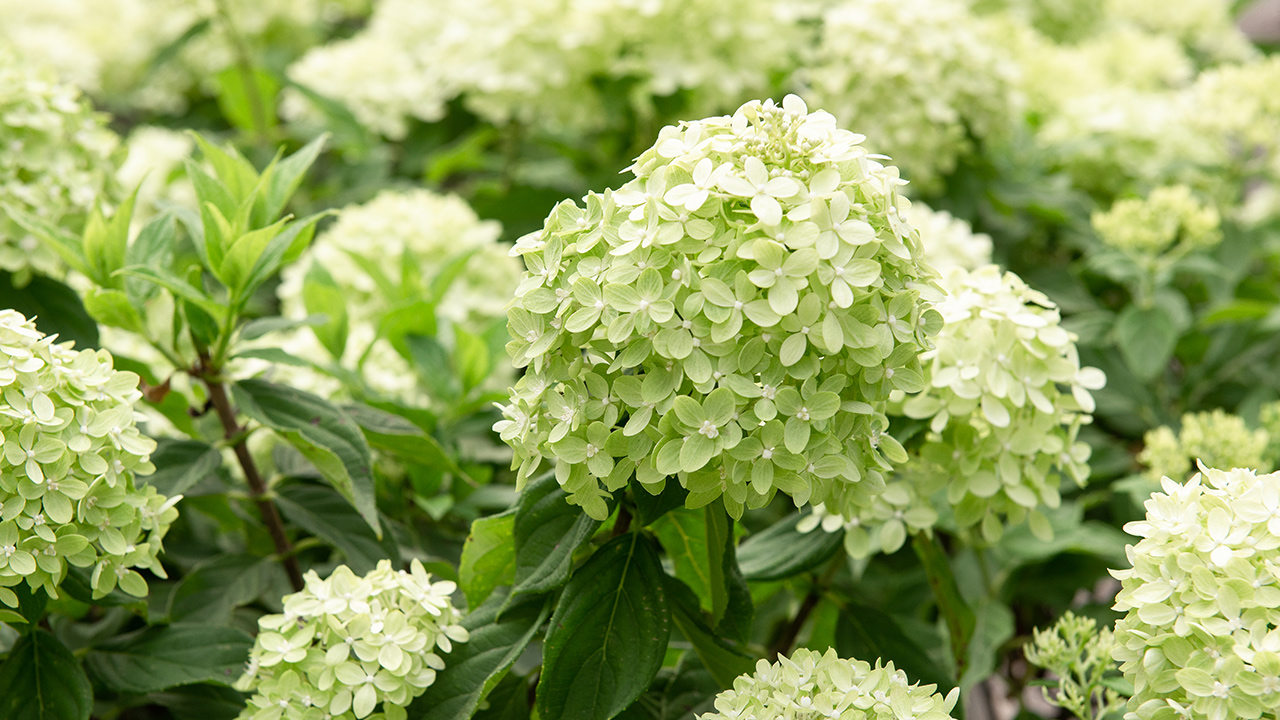
A Reliable, Four-Season Show
Panicle hydrangeas never fail to provide abundant color for your landscape – they set their blooms on spring’s new growth, so frigid winters can’t take out this year’s crop of buds. After a spring covered in attractive, bright green foliage, panicle hydrangeas produce large clusters of white or creamy-white blooms starting in mid-summer. As late summer passes into fall – and so many other summer bloomers are beginning to fade – the blooms slowly mature into pink or lime-green, then to shades of strawberry or burgundy, depending on the cultivar. When frost arrives, they age to an attractive tawny-brown and remain on the plant providing beautiful texture for the winter landscape too. And unlike the famous pink or blue mophead hydrangeas, none of this color change is dependent on special soil chemistry – it happens naturally as the nights begin to cool in late summer and fall.
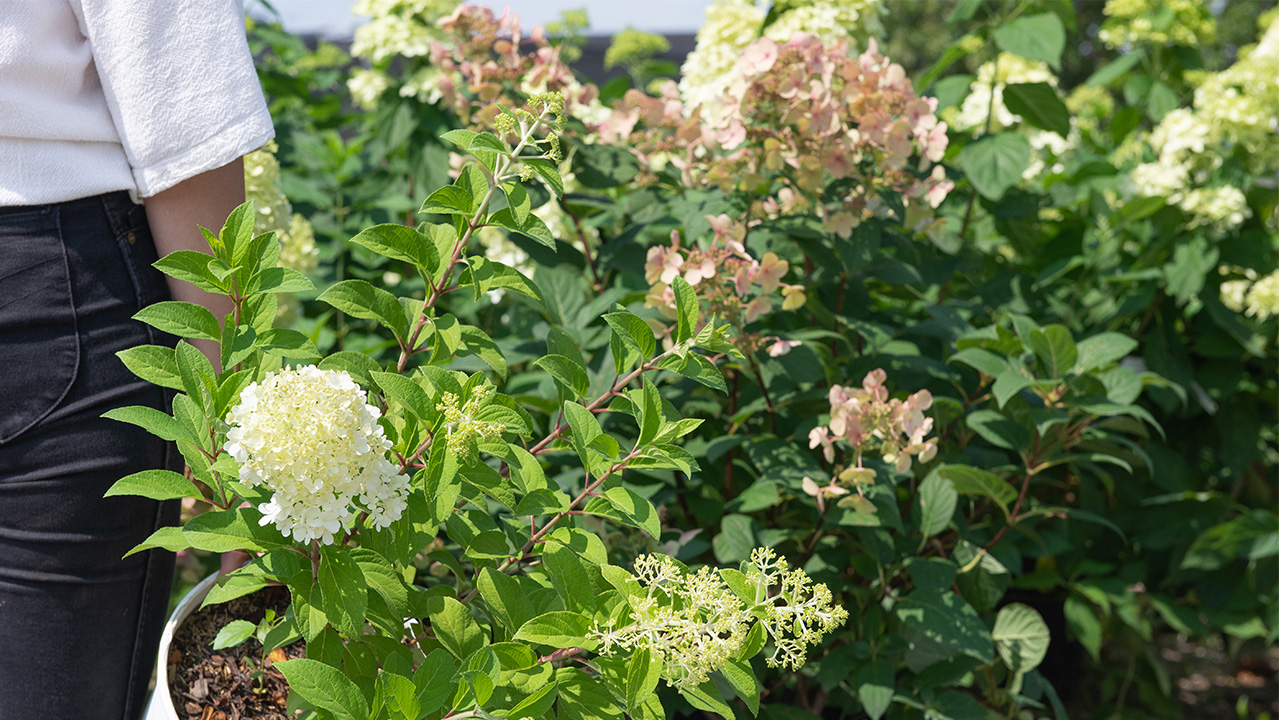
A Perfect Fit for Any Sunny Space
Whether your landscape needs a stunning anchor for a perennial bed, a lovely blooming hedge along a border, a natural living screen, or a little pop of color in a smaller corner, there’s a panicle hydrangea for that. Some varieties get big – five to eight feet tall and wide – and can fill an impressive space with loads of beautiful blooms. But some – like ‘Little Lime’ or ‘Bobo’ – are much more compact and fit just about anywhere.
There are even tree-form panicle hydrangeas with their gorgeous blooms and foliage set high on top of a single trunk. Tree hydrangeas make it possible to have those beautiful hydrangea blooms in even the smallest of spaces. This variety of form and function means there’s a panicle hydrangea to suit any landscape design.
The clustered panicle blooms come in different styles too. Some cultivars produce more tightly packed and rounded clusters reminiscent of the classic mophead hydrangea popular in formal gardens. Others – like Quick Fire® and the smaller Little Quick Fire® – have a more breezy and open arrangement in their blooms, so they fit right in with the native plants in a nature-inspired landscape. And some – like Pinky Winky® – produce enormous, strongly conical clusters that look almost like giant astilbe flowers.
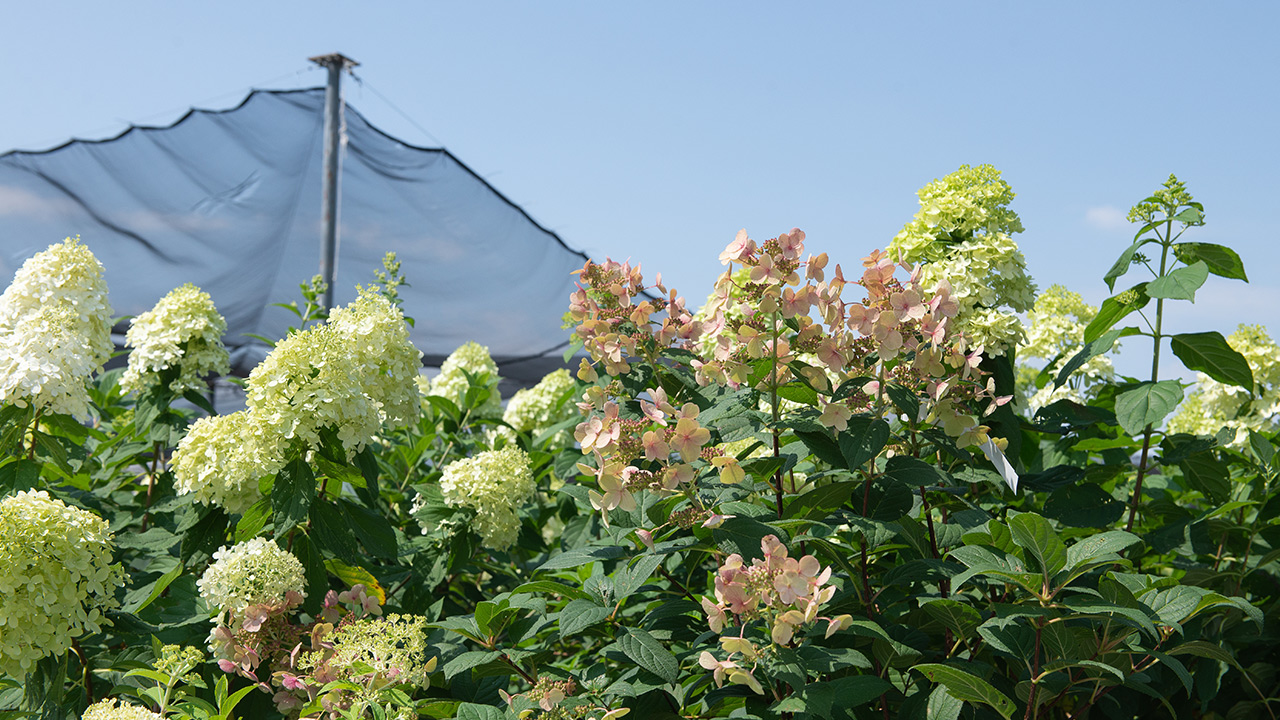
An Easy-Going Personality
Panicle hydrangeas aren’t fussy. Given a spot with four to five hours of sun, well-drained soil, and a little mulch to conserve moisture in the summer, they’ll perform beautifully year after year with little to no additional attention from us. Pruning is a breeze too. As long as you avoid cutting them back in early spring and summer when the buds are forming, a trim in late winter, or very early spring won’t affect next year’s blooms at all. And panicle hydrangeas are hardy enough to power through years of our tough winters too.

A Benefit to the Garden Community
Most destructive insects – even the despicable Japanese beetle – seem to ignore panicle hydrangeas. But even better, panicle hydrangeas also attract beneficial insects that eat some of the pests you might find bothering other plants in your garden. Panicle hydrangeas are a favorite pollen and nectar source for soldier beetles and their larvae – these voracious predators feed on cucumber beetles, aphids, spider mites, and other damaging pests. Panicle hydrangeas attract parasitoid wasps too – like the steel-blue cricket hunter – who fuel up on hydrangea nectar before using pests like crickets and cutworms as incubators for their eggs. The beautiful white and pink blooms also attract a variety of bees, butterflies, and other important pollinators to your landscape too.
Need an Amazing Shrub?
For beauty, reliability, four-season interest, and versatility, it’s hard to beat panicle hydrangea. On your next visit, stop by the Nursery Yard to see all the amazing varieties in our collection. If you have any questions, just let us know.

